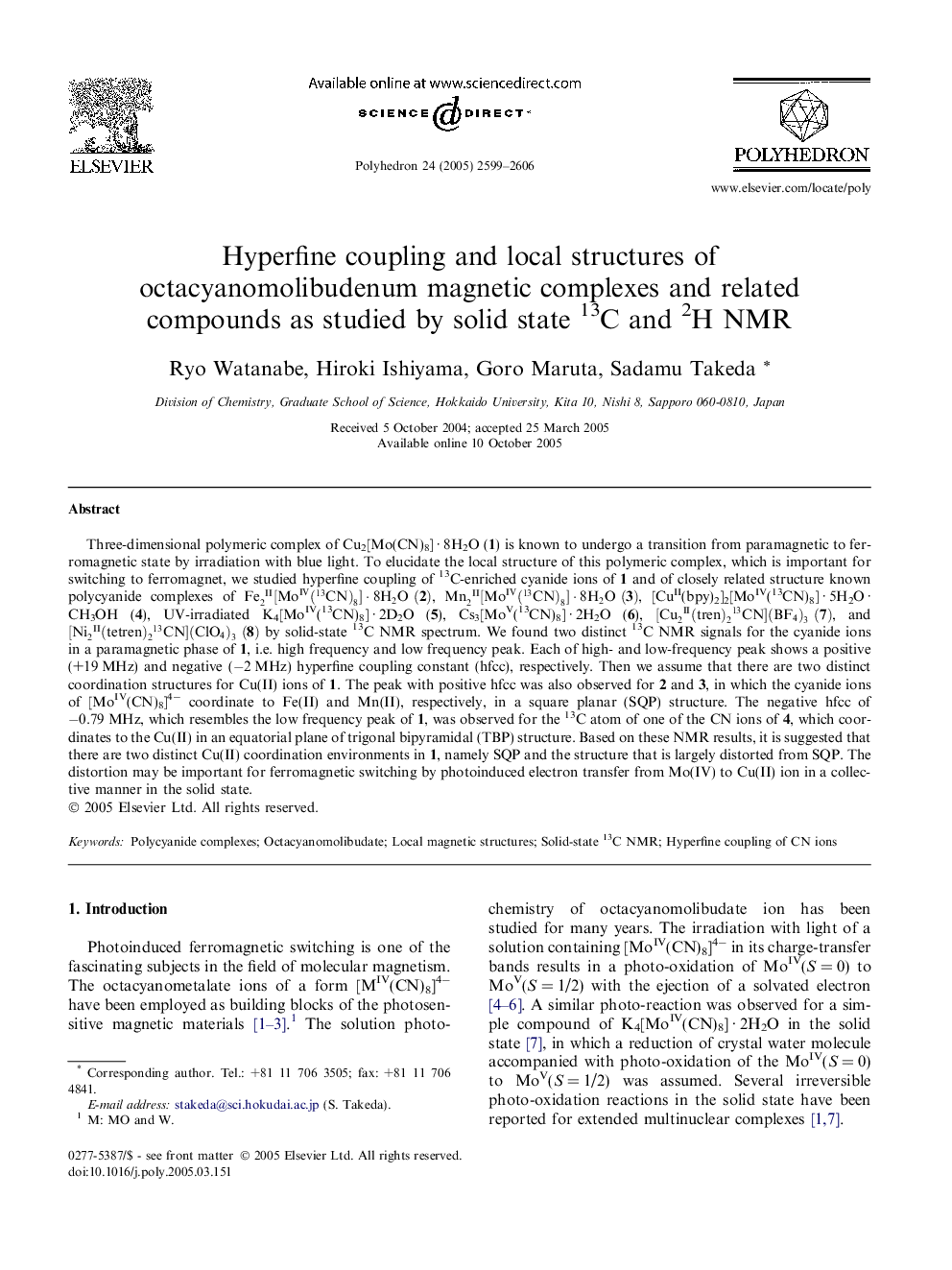| کد مقاله | کد نشریه | سال انتشار | مقاله انگلیسی | نسخه تمام متن |
|---|---|---|---|---|
| 1341137 | 1500295 | 2005 | 8 صفحه PDF | دانلود رایگان |

Three-dimensional polymeric complex of Cu2[Mo(CN)8] · 8H2O (1) is known to undergo a transition from paramagnetic to ferromagnetic state by irradiation with blue light. To elucidate the local structure of this polymeric complex, which is important for switching to ferromagnet, we studied hyperfine coupling of 13C-enriched cyanide ions of 1 and of closely related structure known polycyanide complexes of Fe2II[MoIV(13CN)8]·8H2O(2), Mn2II[MoIV(13CN)8]·8H2O(3), [CuII(bpy)2]2[MoIV(13CN)8] · 5H2O · CH3OH (4), UV-irradiated K4[MoIV(13CN)8] · 2D2O (5), Cs3[MoV(13CN)8] · 2H2O (6), [Cu2II(tren)213CN](BF4)3(7), and [Ni2II(tetren)213CN](ClO4)3(8) by solid-state 13C NMR spectrum. We found two distinct 13C NMR signals for the cyanide ions in a paramagnetic phase of 1, i.e. high frequency and low frequency peak. Each of high- and low-frequency peak shows a positive (+19 MHz) and negative (−2 MHz) hyperfine coupling constant (hfcc), respectively. Then we assume that there are two distinct coordination structures for Cu(II) ions of 1. The peak with positive hfcc was also observed for 2 and 3, in which the cyanide ions of [MoIV(CN)8]4− coordinate to Fe(II) and Mn(II), respectively, in a square planar (SQP) structure. The negative hfcc of −0.79 MHz, which resembles the low frequency peak of 1, was observed for the 13C atom of one of the CN ions of 4, which coordinates to the Cu(II) in an equatorial plane of trigonal bipyramidal (TBP) structure. Based on these NMR results, it is suggested that there are two distinct Cu(II) coordination environments in 1, namely SQP and the structure that is largely distorted from SQP. The distortion may be important for ferromagnetic switching by photoinduced electron transfer from Mo(IV) to Cu(II) ion in a collective manner in the solid state.
The local magnetic structures of Cu2[Mo(CN)8] · 8H2O (1) were investigated. Based on the NMR results for 1 and related octacyanomolibudenum compounds, it is suggested that there are two distinct Cu(II) coordination environments in 1, namely a square planar and the structure that is largely deformed from the square planar, which may be important for ferromagnetic switching by photoinduced electron transfer from Mo(IV) to Cu(II) ion in a collective manner in the solid state.Figure optionsDownload as PowerPoint slide
Journal: Polyhedron - Volume 24, Issues 16–17, 17 November 2005, Pages 2599–2606